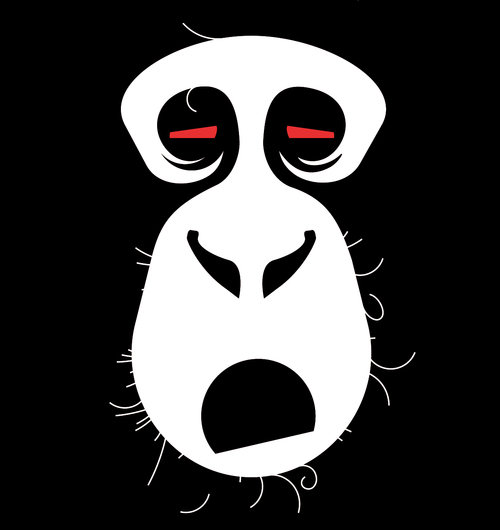Exploring Party
dal 15/6/2007 al 22/6/2007
Segnalato da
Modeselektor
Die Pfadfinderei
Dominik Eulberg
Triple R
Yvette Klein
Christian Jamin
Cornelia Lund
Holger Lund
15/6/2007
Exploring Party
Wurttembergischer Kunstverein WKV, Stuttgart
Party as art. From Warhol's ep to now. The event examines the history of the party as a space for experimental art, while at the same time manifesting the artistic potential of the party in live events and start reflection on party as art with presentations and screenings. Curated by Cornelia Lund and Holger Lund. Works by Jonas Mekas, Ronald Nameth, The Light Surgeons, Die Pfadfinderei, Rojo, Robert Heel and others.

Party as art. From Warhol's ep to now
curated by Cornelia Lund and Holger Lund
Video / Music
Modeselektor (BPitch Control, Berlin), Die Pfadfinderei (Visuals, Berlin); Triple R, Dominik Eulberg
(Traum Schallplatten (Traum/Trapez/MBF), Köln), Yvette Klein (Visuals, Köln), Christian Jamin
(Visuals, Basel) and others
Graphic Art / Light / Motion Graphics
stapelberg & fritz (Daniel Fritz and Maik Stapelberg), Oliver Moore and vonm/matthias siegert
Presentations by
Maxa Zoller (London), Ronald Nameth (Stockholm, tbc)
Exhibition
Works by Jonas Mekas, Ronald Nameth, The Light Surgeons, Die Pfadfinderei, Rojo, Robert Heel
and others
Concept
The party as an event format has a creative potential that was tried and tested in the art and
music scenes of the early 60s, most famously by Andy Warhol. Since the end of the 90s, with the
rise of a wide-spread VJ culture, experimental audiovisual events with party characteristics have
been organized in various locations all over the world. A broad community of artists and musicians
has grown out of that development. To explore this phenomenon within different curatorial
contexts is on the agenda of fluctuating images, a non-commercial media art space with a mostly
audiovisual orientation. The project “Exploring Party” will examine the history of the party as a
space for experimental art, while at the same time manifesting the artistic potential of the party in
live events.
In the mid 60s, Andy Warhol's “Exploding Plastic Inevitable” featured all the pop-cultural media of
the day: multiple projections, lighting design, the spectator as living screen, dance, music by the
Velvet Underground – with these ingredients, Warhol invented a multimedia event that was both
art and a party.
Transforming parties into art goes back even earlier, as can be seen in Maya Deren's experimental
film “Ritual in Transfigured Time” (1946); a filmic tradition that leads to Sam Taylor-Wood's “Third
Party” (1999) amongst others. The party has therefore a long history as a space for experimental
art forms, it is an off-space for subcultures, but also a semi-official in-space, it is a space for aesthetic and social energies – this is what the “Exploring Party” project will demonstrate in
practice while opening a theoretical discourse in its exhibition and event programme.
For the first
time, the focus will be on artists creating parties within the rooms of an art institution.
Visual music will be the centre of these parties – live generated productions by DJs or electronic
musicians and VJs that come from a club or party context but are steadily conquering art
institutions. Three multimedia live-performances will deal with party as art via music, visuals,
dance, graphics and motion graphics. Modeselektor (music) and Die Pfadfinderei (visuals) who
already presented their Labland show in the Centre Georges Pompidou (Paris) and the Volksbühne
(Berlin) will present a new audiovisual set, and Yvette Klein (visuals at Sonar, Barcelona and
Mutek, Montreal) and Christian Jamin (visuals at Theater Basel) will realize a new audiovisual set
together with Dominik Eulberg (music, Top 3 DJ and best producer (Groove Magazin), Dance Music
Award nomination 2004 and 2006) and Triple R (music, label director of Traumschallplatten).
This artistic character of these parties will be complemented by an exhibition showing exemplary
film works related to the topic, and by lectures and discussion panels reflecting on it.
Andy Warhol’s EPI is the main reference point for the discussion of party as art. Two things are
central: the accumulation of media and the interaction of media – finding new possibilities in both.
Since the audience at EPI was severely stressed out by the collected forces of the media there, felt
steamrollered by media overkill, the second idea, the interaction between the media, looks more
promising.
This is the starting point for Exploring Party, especially in the three live performances. Today it’s
possible to digitally produce sounds and images in real time, and to digitally tie these together – so
what new roads are open for the interaction between the media? Visual Music is at the centre of
developments here, the genre steadily experimenting with audiovisual interaction. Visual Music has
its roots mostly in a club and party environment. Here’s where the aesthetics of earlier avant-garde
filmers have been developed to find fitting visualisations for dance music – which, going back
again, already lies at the heart of Warhol’s EPI.
It was Warhol who used the freedom of a party context to experiment with the artistic possibilities
of a party – ultimately turning the party into a work of art. Party as art, here we come full circle:
this is our concern, questioning the history of media, the actuality of media, the status accorded to
different arts. An attempt to answer these questions must go beyond a simple presentation in an
exhibition. That’s why party as art is not just a topic that the Exploring Party project discusses and
reflects, but something the live events will realise in performance.
Supported by Landesstiftung Baden-Württemberg, MFG Filmförderung Baden-Württemberg,
Medienteam Landeshauptstadt Stuttgart, Kulturamt Landeshauptstadt Stuttgart, Stiftung
Landesbank Baden-Württemberg, Swedish Ambassy, Audi Zentrum Stuttgart, prolab Stuttgart,
Haller Löwenbräu, Smirnoff Ice, afric cola and Rilling Sekt. Sound: f.concept - licht + tontechnik
(www.f-concept.de). Media partners: Lift Stuttgart and re.flect.
Wurttembergischer Kunstverein
Schlossplatz 2 - Stuttgart



